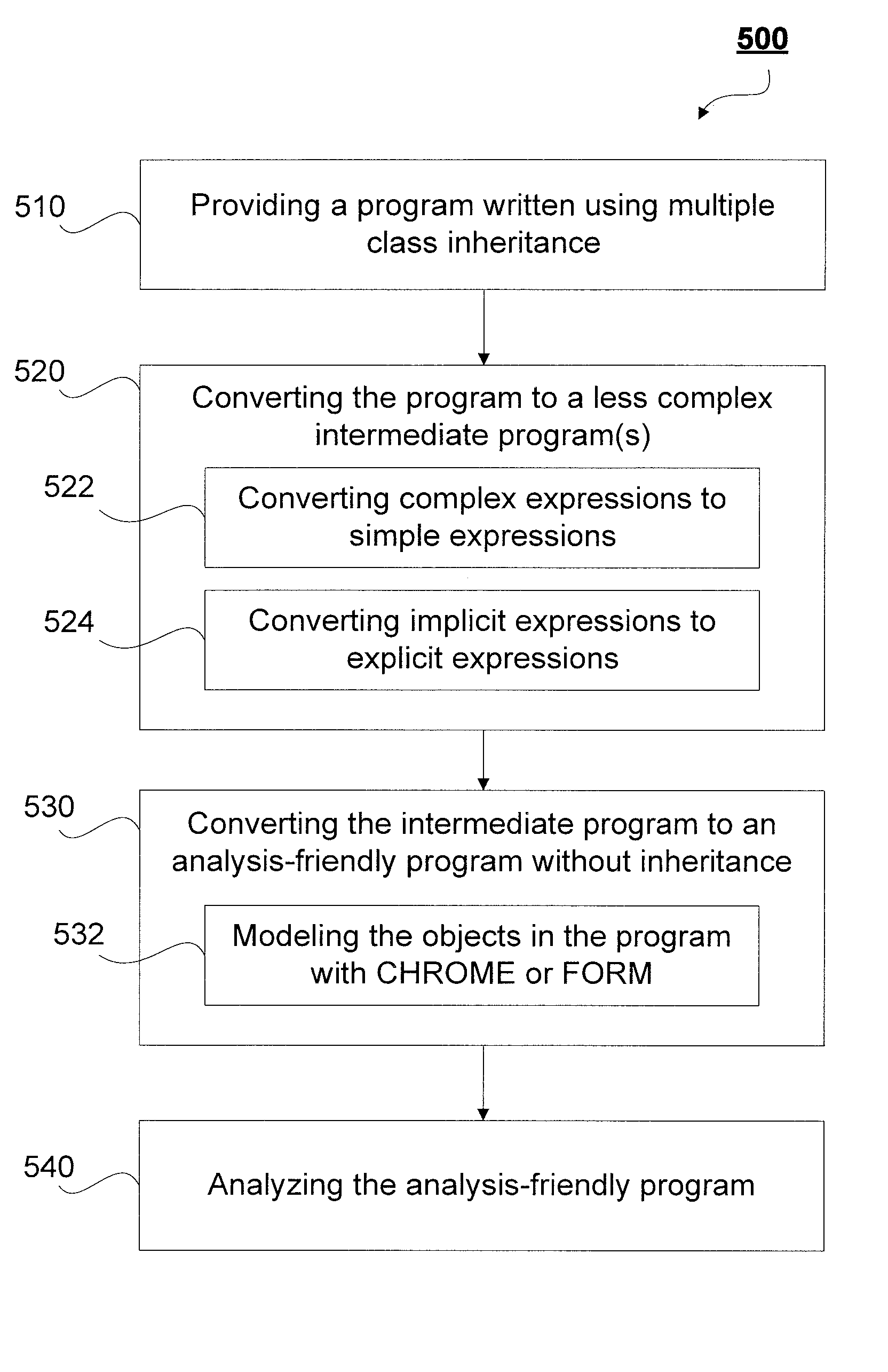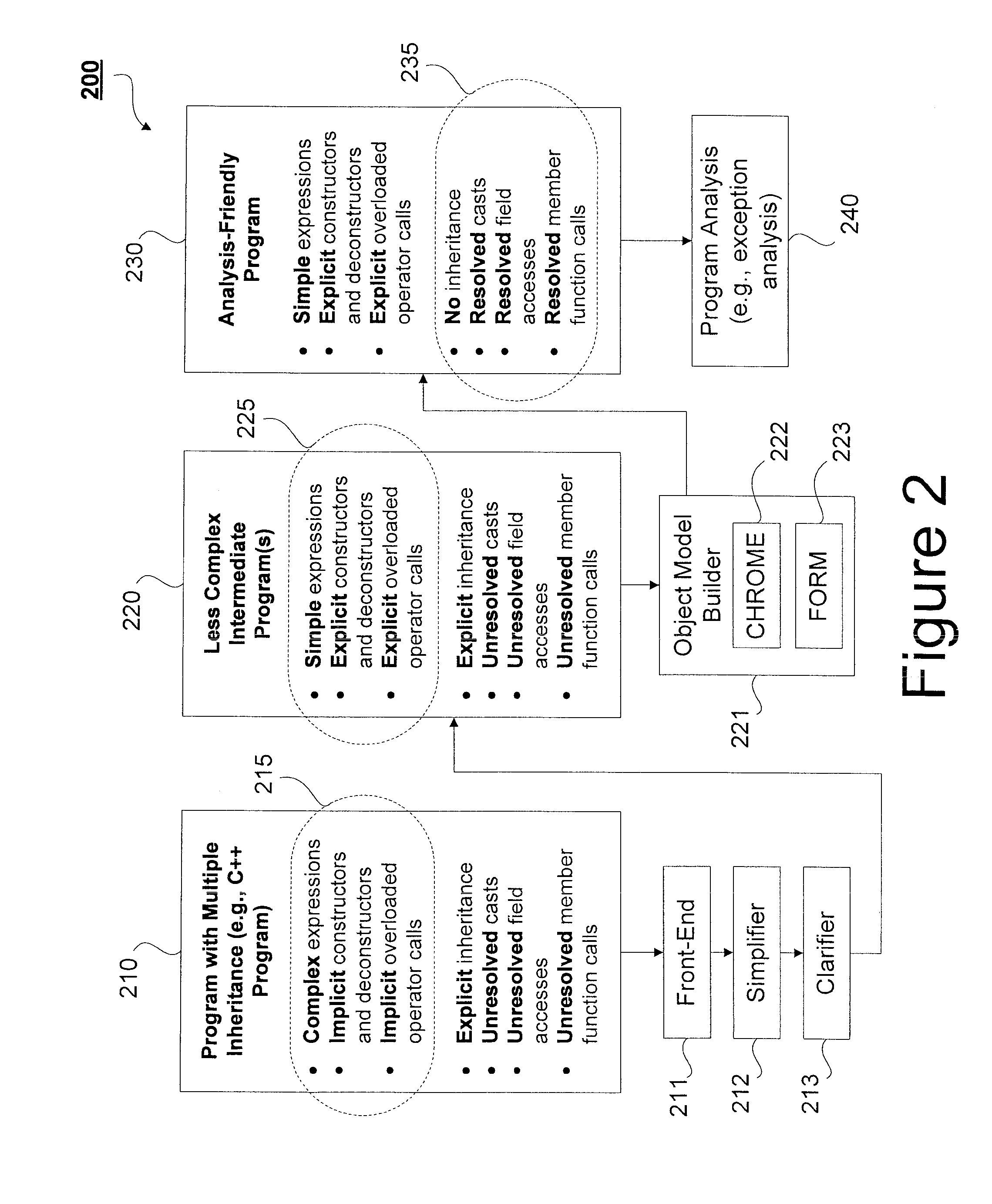Embedding class hierarchy into object models for multiple class inheritance
a class hierarchy and inheritance technology, applied in the field of program transformation techniques, can solve the problems of ineffective conventional analysis techniques, complicated features that complicate the subsequent analysis of programs, and inability to perform program analysis and testing procedures in the presence of “analysis-hinderings"
- Summary
- Abstract
- Description
- Claims
- Application Information
AI Technical Summary
Benefits of technology
Problems solved by technology
Method used
Image
Examples
example 1
[0062]An object B inherits from objects L and R. Thus, the B-object can be modeled as including sub-objects of type L and R. Further assume that the sub-objects of type L and R each separately inherit from a distinct sub-object of type T. Hence, a B-object transitively inherits twice from class T and has two distinct sub-objects of type T (i.e., one inherited from class L and the other inherited from class R).
[0063]C++ provides two mechanisms for representing inheritance, “replicated inheritance” or “shared inheritance”. With replicated inheritance, separate copies of each sub-object are created. Hence, in Example 1, two separate sub-objects of T would be created.
[0064]Alternatively, C++ also provides for “shared inheritance”. Shared inheritance is implemented with “virtual base classes” to prevent replication of base classes. Unlike a non-virtual base class, an object of a virtual base class type is shared among the objects of all its direct and transitive derived classes. Applying...
PUM
 Login to View More
Login to View More Abstract
Description
Claims
Application Information
 Login to View More
Login to View More - R&D
- Intellectual Property
- Life Sciences
- Materials
- Tech Scout
- Unparalleled Data Quality
- Higher Quality Content
- 60% Fewer Hallucinations
Browse by: Latest US Patents, China's latest patents, Technical Efficacy Thesaurus, Application Domain, Technology Topic, Popular Technical Reports.
© 2025 PatSnap. All rights reserved.Legal|Privacy policy|Modern Slavery Act Transparency Statement|Sitemap|About US| Contact US: help@patsnap.com



